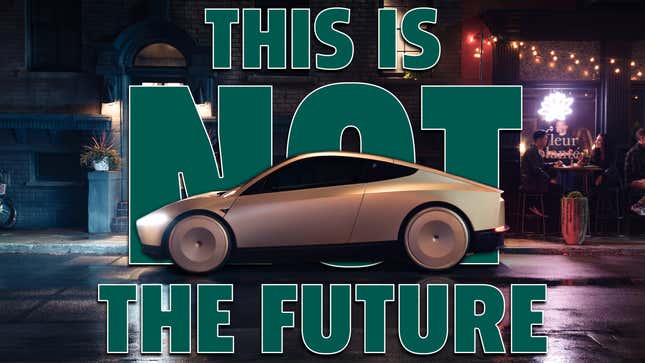
Buyers are all abuzz proper now on the information that Donald Trump will make it simpler to get autonomous automobiles on the roads. Tesla inventory shot up on the information, and Wall Road analysts justified the leap by saying a lot of the corporate’s worth relies on its AI efforts. Right here’s the problem: The analysts are improper, and autonomous automobiles are usually not the market godsend they’re anticipating.
CNBC spoke with analyst Tom Narayan of RBC Capital yesterday, to ask whether or not Trump’s promise to decontrol autonomous autos would outweigh his promise to finish the federal EV tax credit score. Narayan had beforehand written on the subject when elevating RBC’s goal value for Tesla, saying that autonomy accounts for a full 77 p.c of the corporate’s valuation. He informed CNBC that AV deregulation would far outweigh the tax credit score in significance, as it could enable Tesla to create a car “with out wheels and pedals” that “cuts down quite a lot of prices” and may “gobble up the market.” The issue Narayan doesn’t see, nonetheless, is that chopping wheels and pedals received’t save that a lot price — and that the self-driving market is much smaller than most assume.
First off, the price financial savings from eradicating wheels and pedals from automobiles would possible be almost negligible compared to the price of an autonomous car. Positive, brake grasp cylinders and steering columns are difficult, however AVs nonetheless must brake and steer — the complicated programs stay in place, with solely the human controls eliminated to save cash. In line with Tesla’s elements fiche, your entire higher steering column and wheel meeting for a Mannequin S prices simply $2,853.05 at retail pricing. Nothing to sneeze at, certain, however not even sufficient to outweigh the $2,400 automobile pc. Controls aren’t the large cash sinks in automotive manufacturing.
Then there’s the AV market, which is extra dire than analysts assume. The total world passenger automobile market sat at about $3.1 trillion in 2022. Research have proven that 86 p.c of U.S. drivers need to have the ability to take over an autonomous automobile within the occasion of an emergency, which means that each AV producer is just enjoying for a slice of a $434 million pie if these numbers maintain up globally. Add in Tesla’s grasp plan to enable Robotaxi homeowners to share their autos, which may enable a single car sale to cowl a number of consumers, and the corporate’s piece of that already tiny market may find yourself infinitesimal. For context, no automaker at the moment holds greater than an 11 p.c market share globally — Tesla may properly be enjoying for mere tens of hundreds of thousands right here. That doesn’t justify 77 p.c of a trillion-plus-dollar market cap.
Clearly, AV sentiment varies by location, and making use of U.S. attitudes in the direction of autonomy in the direction of your entire world market is an oversimplification for this instance. Chinese language automobile consumers are extra open to autonomy than we’re over right here, whereas people in India hew nearer to our American opinions. However even when that complete AV market doubles or triples in dimension, it’s not sufficient to justify the kind of funding we’re seeing. Autonomous autos are usually not a supply of infinite revenue with minimal price ready simply across the nook, locked away by federal regulation — they’re a distinct segment curiosity that most individuals received’t purchase.


